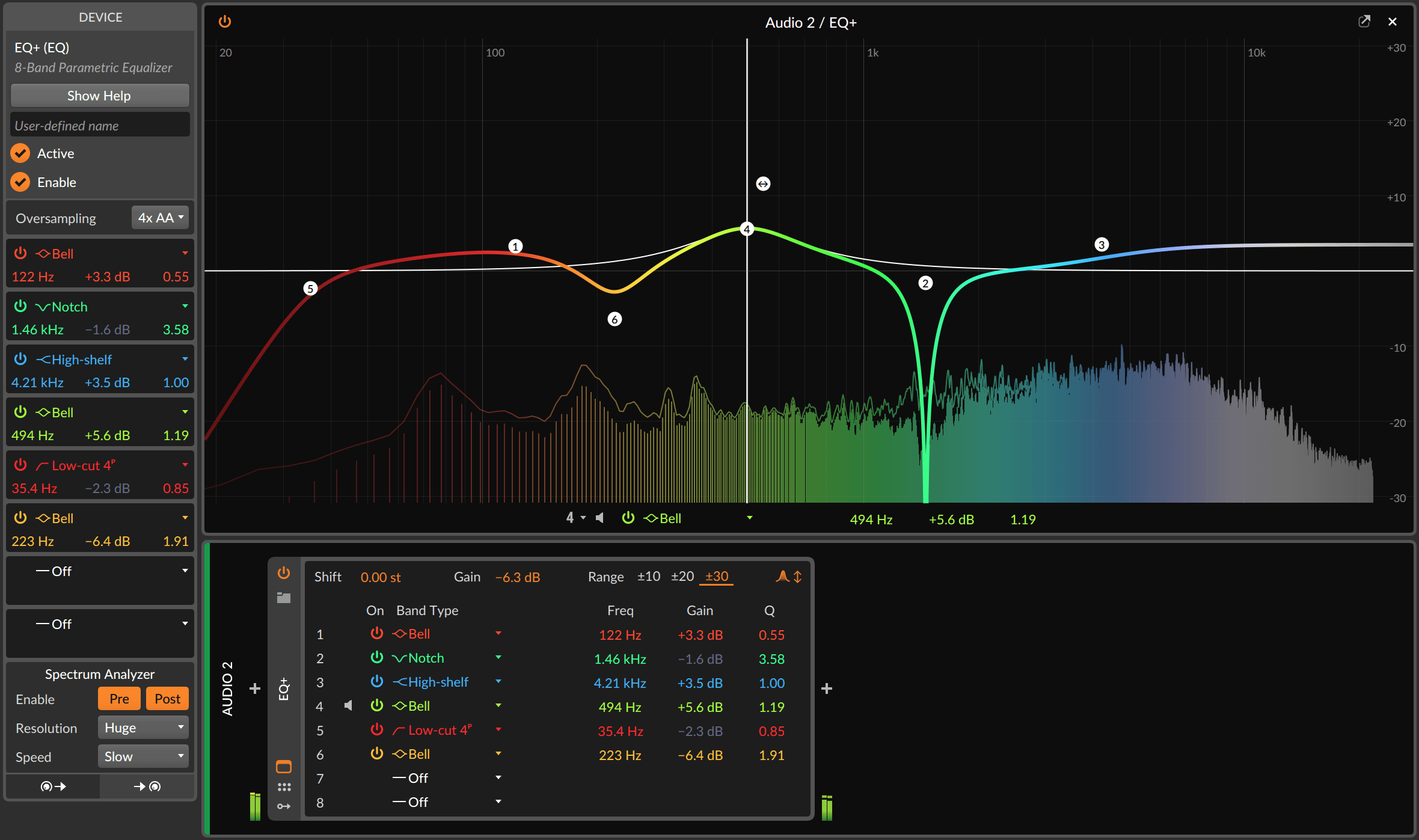

Solo of individual bands directly in the editor.Color-coded pre- and post-spectrum displays.Range selection: good for subtle detail work or radical reshaping.Freely assignable bands (just click on the curve).The colour of each band’s frequency is then used to colour that band.ĮQ+ is optimized for high efficiency, yet offers pristine audio quality. It’s a feature-packed graphic equalizer with up to 8 bands, excellent visualization, and new algorithms.Īnd while it is a graphic equalizer, EQ+ goes a step further by applying a rainbow colour spectrum to the EQ curve.
#BITWIG STUDIO 2 EQ 5 VS ABLETON EQ 8 UPDATE#
The new update focuses on greater control and sculpting possibilities for all sounds, whether colouring audio sources or reinterpreting note messages in new and adventurous ways.ĮQ+ brings a new look and modern sound to Bitwig Studio.

Reworked audio backends, sporting timing improvements on all platforms.VU Meters in Routing Choosers, showing the signal you are looking for.Redesigned Instrument Inspector, offering polyphony, two mono voice modes, and more.Global GUI Contrast settings, making the interface pop on any monitor.Ableton LINK version 3, supporting start/stop synchronization.Realtime Ruler, showing timelines in minutes and seconds.Automatic Project Backups, each time you re-save a project.FX Grid device: for creating audio FX with optional voice stacking.Poly Grid device: for creating synthesizers, sequenced patches, and more.The Grid, a modular sound design environment sporting 154 modules and lightning-fast workflows.Use this EQ and you will get incredible results.Welcome to Bitwig Studio 3, the innovative music creation and performance software.Ī short list of what’s new in Bitwig Studio 3, including new worlds of modular expression: The toggle between stereo and surround mixing options is something not found in some of the most expensive 3 rd party equalizer plugins without the CPU load on your computer. The simple look is deceptive because the resulting power is unmatched. Firstly, the top of this panel has the headphones (enabling you to listen to the frequency node in solo), the spectrograph on/off toggle, the playback effect toggle between stereo, L/R, and M/S for surround or stereo mixing, the Adaptive Q function that when turned on, allows the different node curves to blend into each other smoothly, the scale affects all bands’ gain, and gain which affects the overall output of the signal from this plugin. Tip! When dealing with a low Q, I advise you to be subtle with your gain changes because too much or too little, may bring up the resonance and unwanted frequencies. A high Q reduces the frequency range of the EQ node for precision, while a low Q increases the frequency range affected.

The Q affects the width of the EQ node selected. The volume gain of this selected frequency and the Q. On the left panel, you will get the specific frequency and general range of the frequency that is affected. In the bottom panel, the button next to the EQ band toggles the on/off function of the band, and above this toggle, you can access the different types of EQ curve types from, a wide low-pass, to shelves, bell curves and narrow high pass curves This is the big brother of the EQ Three, allowing you more equalization options and parameters, along with a visual spectrometer to see the frequencies of the audio source you are affecting.ĮQ Eight has 8 frequency bands you can use to affect your audio playback. You can set the specific frequency in the low and high range, and select between 2 different Qs – 24 and 48 for low and high Q. This is the simplest equaliser in Ableton and is named EQ Three because it can only affect 3 frequency bands simply called Low, Mid and High. These are the 2 native equalizers in Ableton and this is how they differ: This is because compression does control the dynamism of an audio sample, and you may end up with a sample that sounds duller after compressing, losing some of its character and grit. This is the opposite of subtractive equalization which normally comes after compression to add volume to certain frequencies and frequency bands. This process is done usually after recording and effects and typically before compression depending on the playback sample’s nature. This method is intended for the removal or control of unwanted, unnecessary and resonant frequencies by cutting their volume in the frequency spectrum. You may have been using them without even knowing them but they are: There are 2 main philosophies of equalization. Recommended Reads: Normalizing, Sidechaining, and Quantizing in Ableton Theories of Equalization


 0 kommentar(er)
0 kommentar(er)
